Mannequin #7 : Russian WW1 Medical Orderly
This medical orderly is wearing a short haired grey Papaha (Astrakhan or fleece/fur cap) which was issued for all troops on September 15, 1913. He is equipped with a water bottle and Model 1912 medical equipment bag (in this case carried with a British WW1 belt, in the configuration it was found).
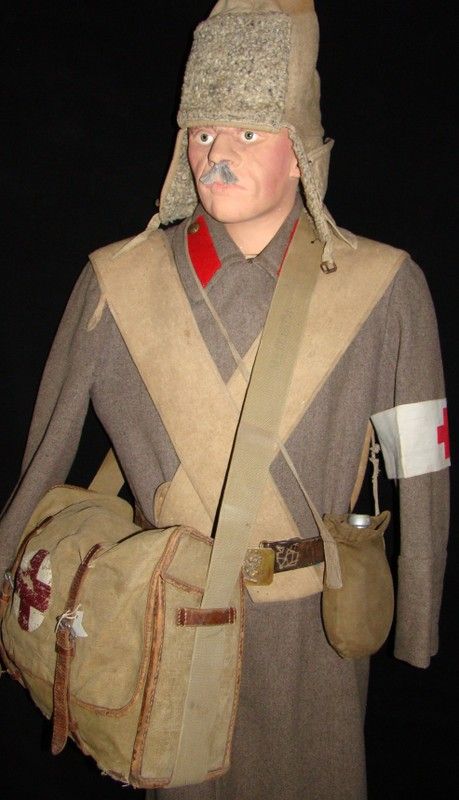
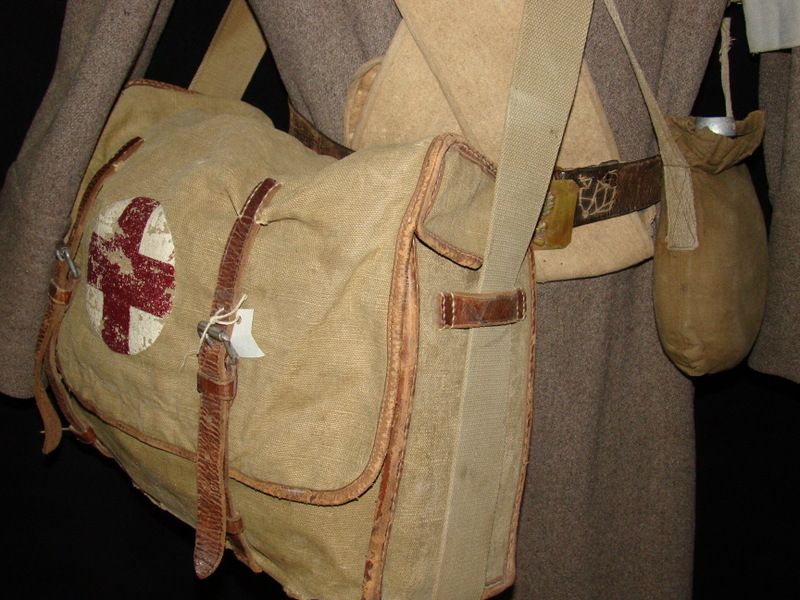
Close-up of the Model 1912 medical orderly bag.
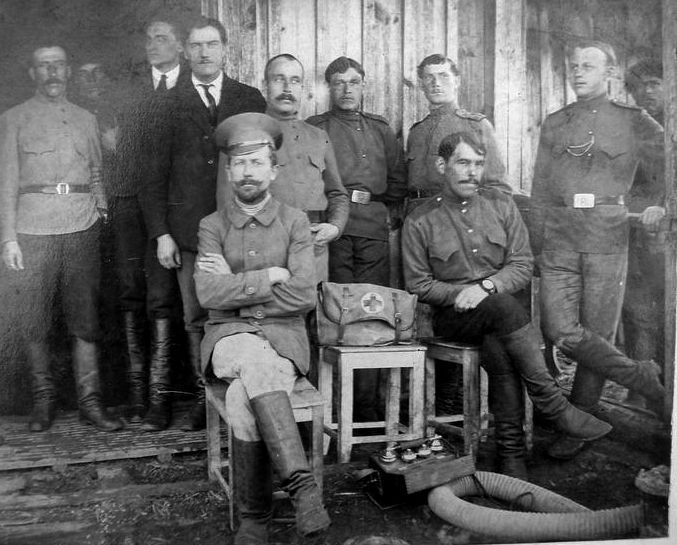
Example of the Model 1912 medic bag. Note the sitting soldier at the left does not has the Imperial insignia on his cap.
When the temperature would drop below -5° Celsius, a special hood, called Bashlik was put over the head and the long ends rolled around the turned up overcoat collar, otherwise it was worn over the shoulders (eg. when the field cap was worn) and the cap rested at the back and the two long cap ends crossed over the breast and tucked under the belt. The Bashlik was made of four parts sewn together, and had at each side, 30 cm long bands. It was made in one size and had a lace of grey linen, while officer had silver lace and higher officers golden lace.
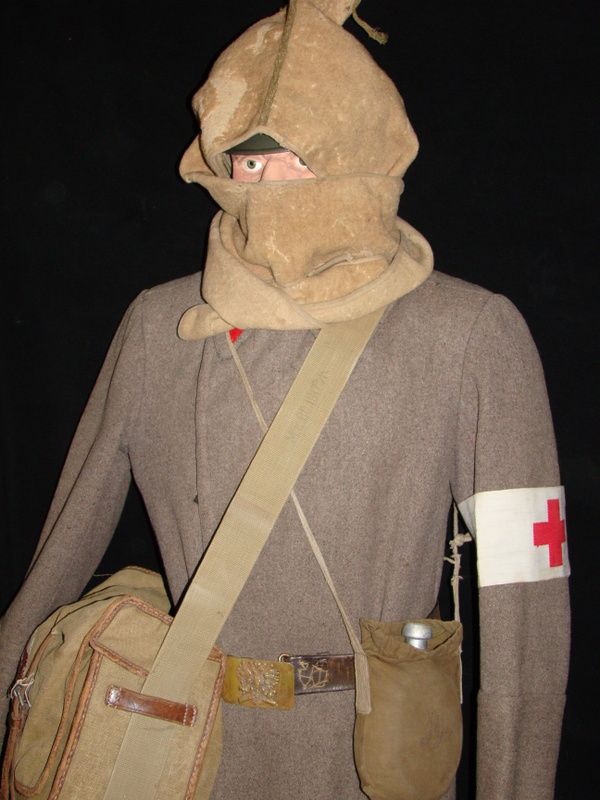
The Bashlik is worn when the temperature dropped below -5° Celcius.
JS1
__________________________________________________ ______________
Auferstanden aus Ruinen
Und der Zukunft zugewandt,
Lass uns dir zum Guten dienen,
...................
http://www.germanuniformsandequipment.co.nr
This medical orderly is wearing a short haired grey Papaha (Astrakhan or fleece/fur cap) which was issued for all troops on September 15, 1913. He is equipped with a water bottle and Model 1912 medical equipment bag (in this case carried with a British WW1 belt, in the configuration it was found).


Close-up of the Model 1912 medical orderly bag.

Example of the Model 1912 medic bag. Note the sitting soldier at the left does not has the Imperial insignia on his cap.
When the temperature would drop below -5° Celsius, a special hood, called Bashlik was put over the head and the long ends rolled around the turned up overcoat collar, otherwise it was worn over the shoulders (eg. when the field cap was worn) and the cap rested at the back and the two long cap ends crossed over the breast and tucked under the belt. The Bashlik was made of four parts sewn together, and had at each side, 30 cm long bands. It was made in one size and had a lace of grey linen, while officer had silver lace and higher officers golden lace.

The Bashlik is worn when the temperature dropped below -5° Celcius.
JS1
__________________________________________________ ______________
Auferstanden aus Ruinen
Und der Zukunft zugewandt,
Lass uns dir zum Guten dienen,
...................
http://www.germanuniformsandequipment.co.nr

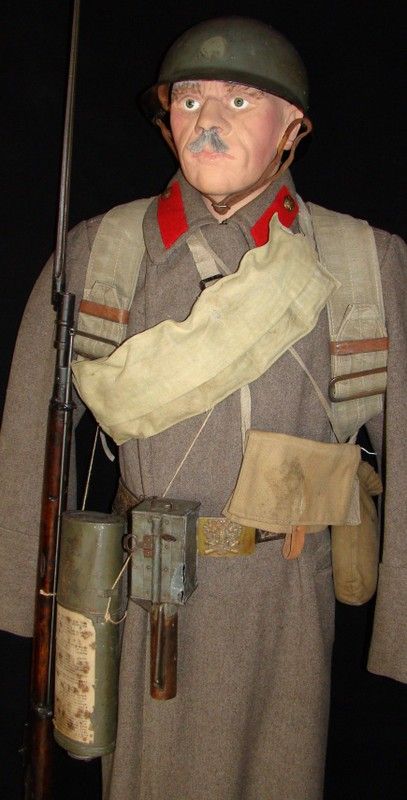
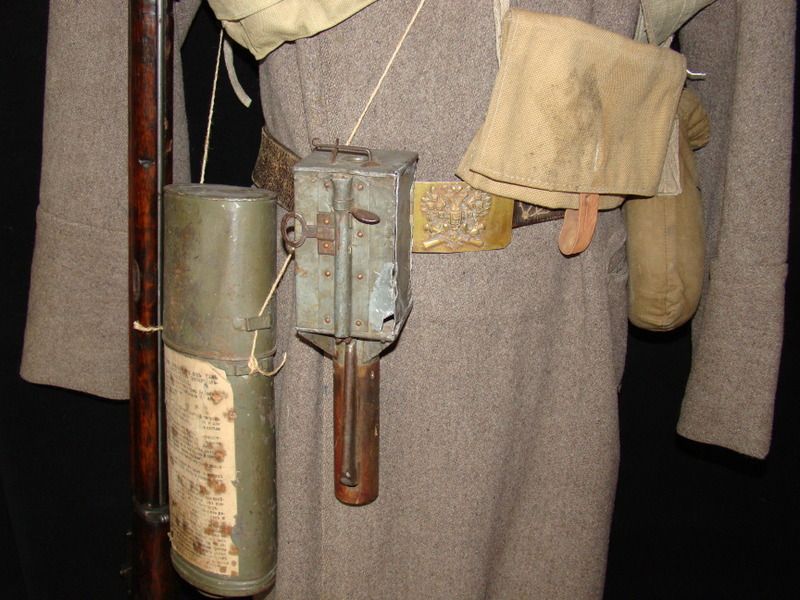
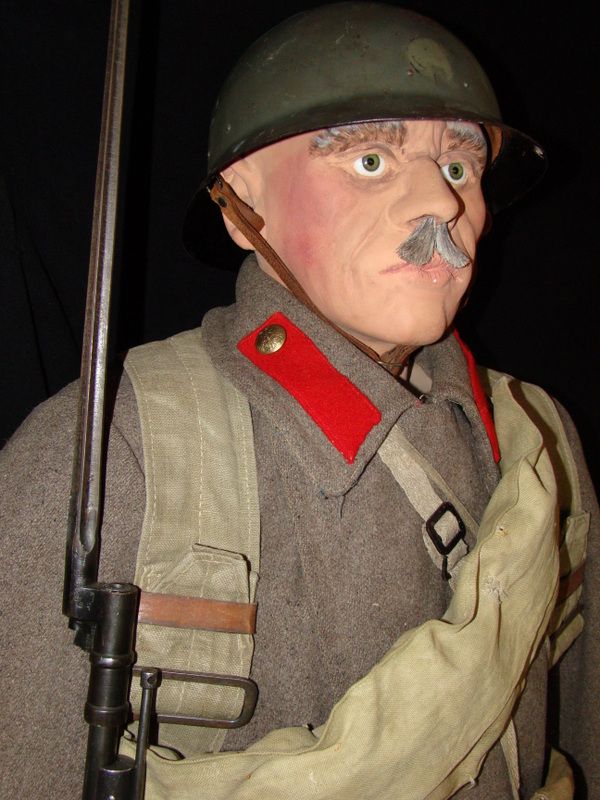
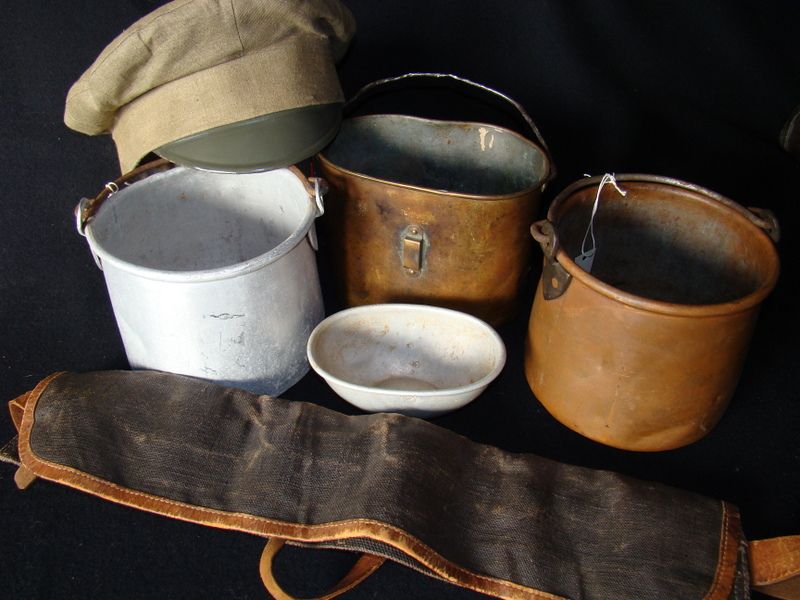
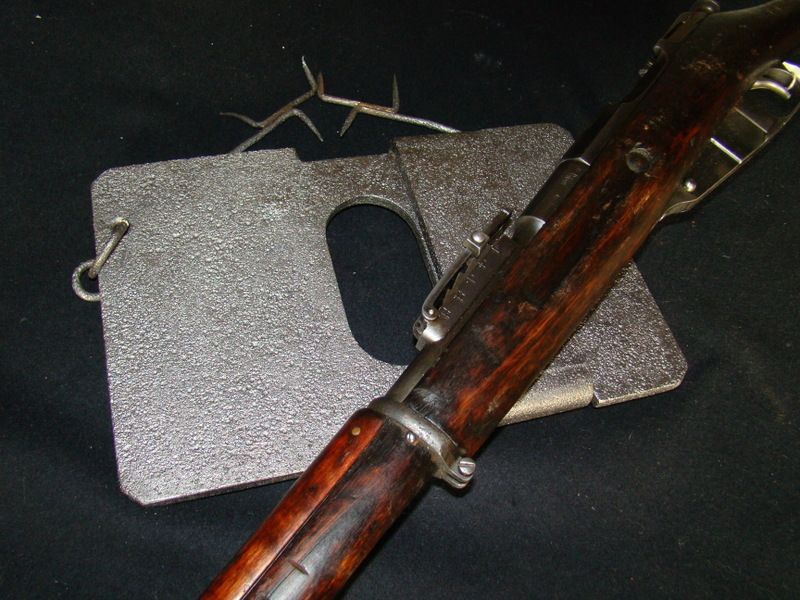



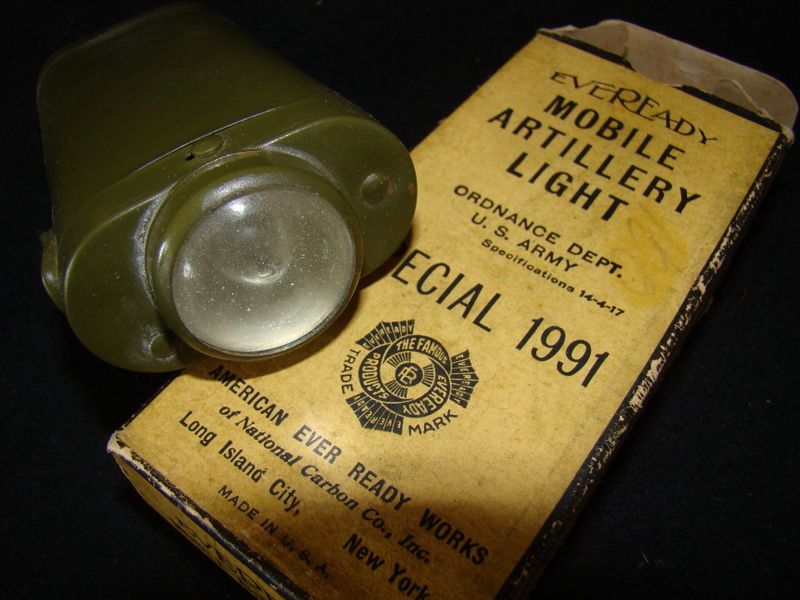





 excelent collection and excelent way of dsiplaying it!!
excelent collection and excelent way of dsiplaying it!!




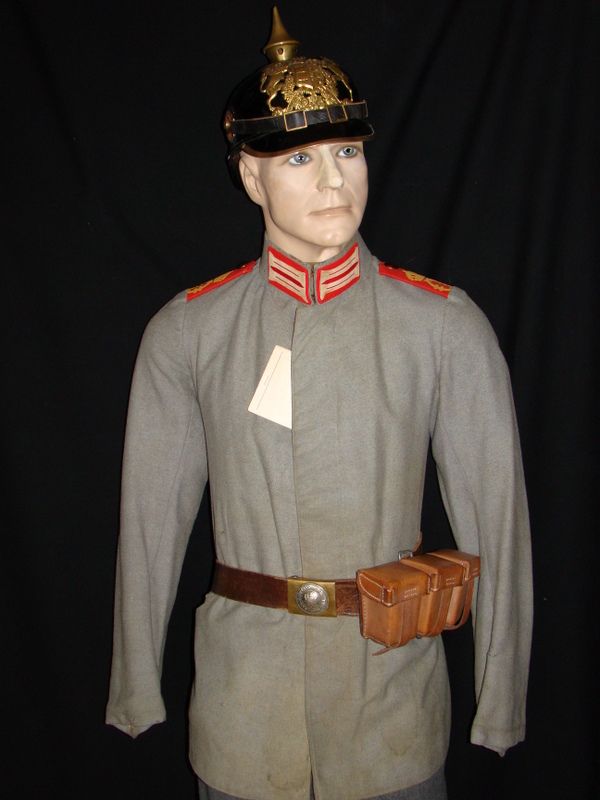
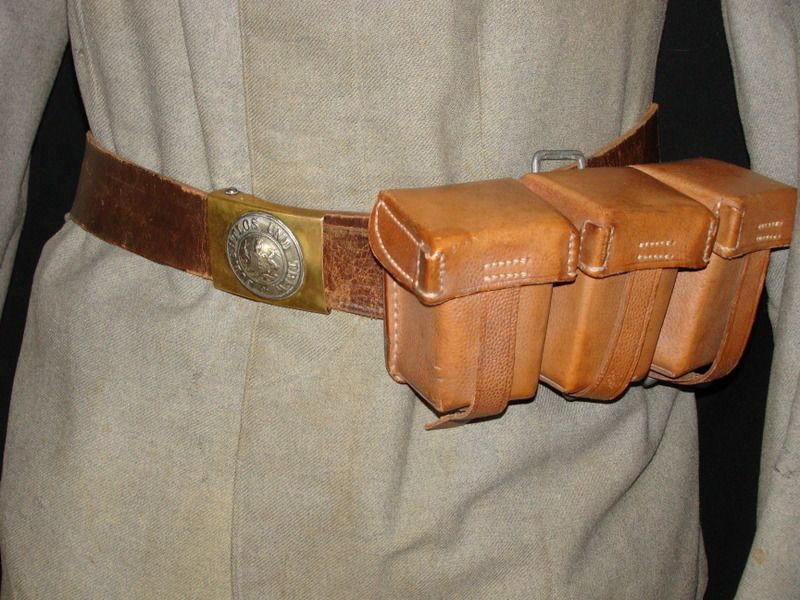
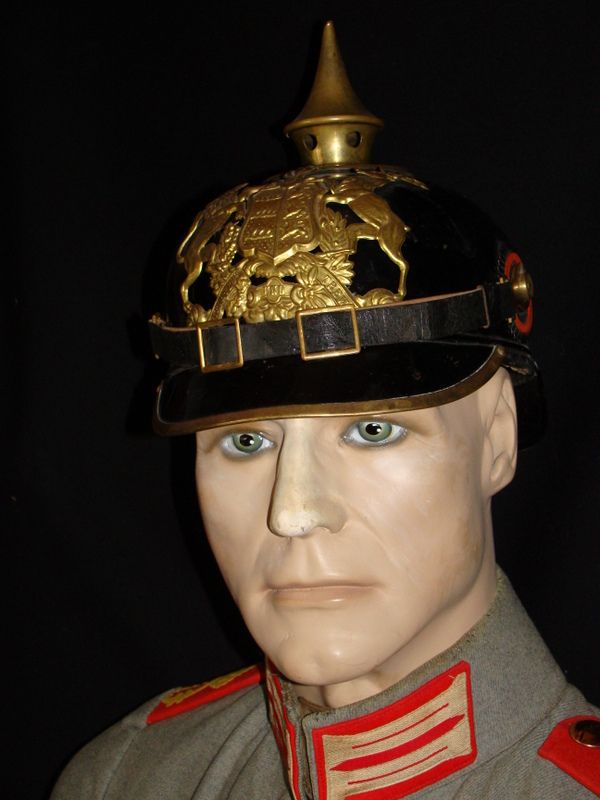
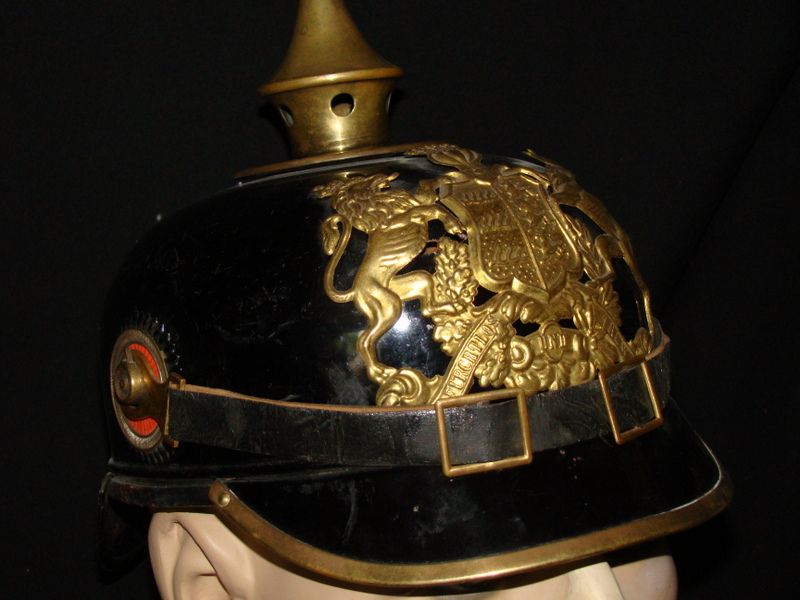

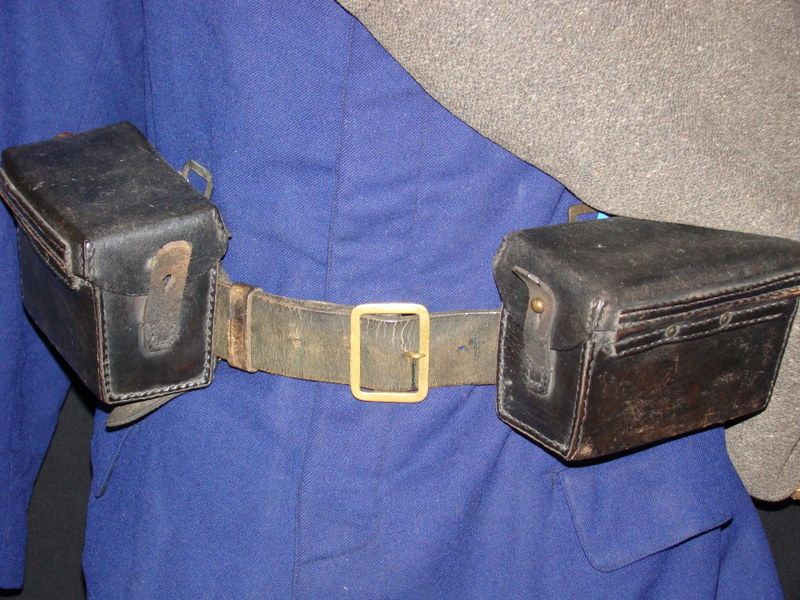
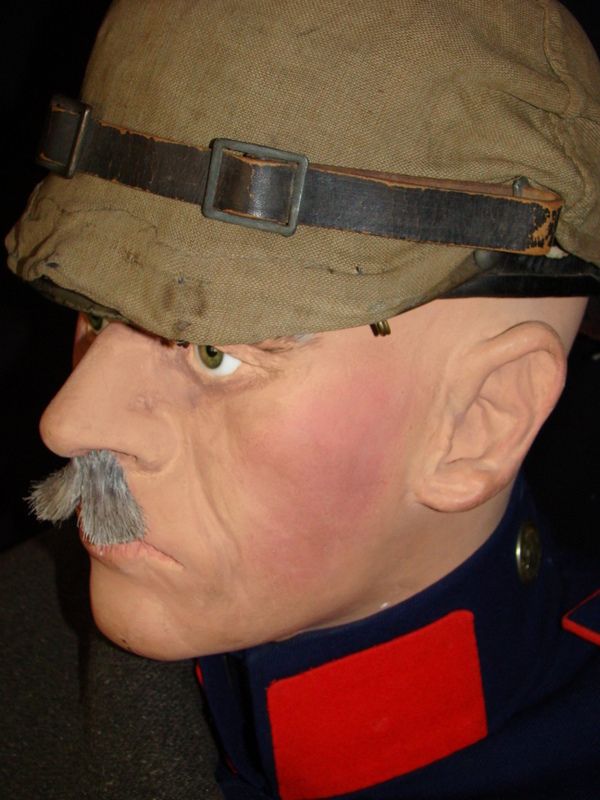
Comment